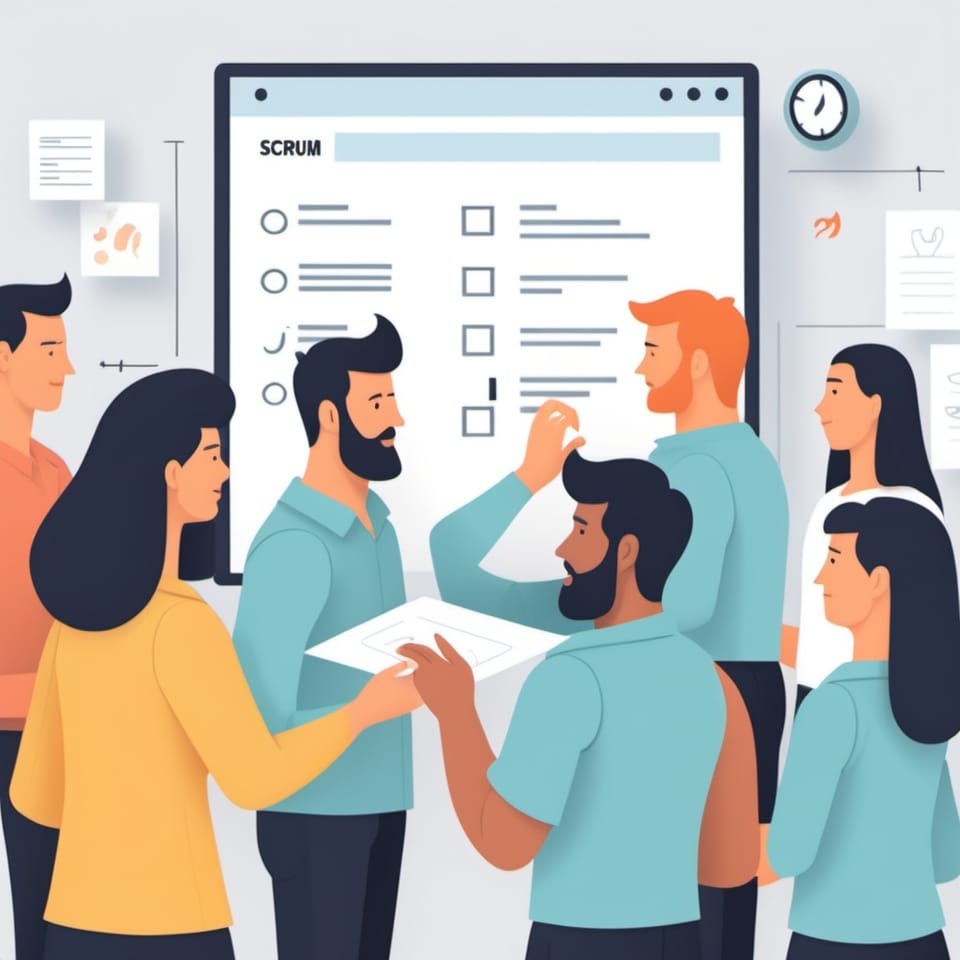The Ultimate Guide to Scrum Ceremonies: Templates and Best Practices

Scrum is a framework that empowers teams to deliver high-quality products iteratively. At the heart of Scrum are ceremonies designed to facilitate communication, alignment, and continuous improvement. To help Scrum Masters and teams succeed, this guide provides detailed templates and best practices for all key Scrum ceremonies.
1. Sprint Planning
Purpose: Define the sprint goal and determine the work to be completed in the upcoming sprint. Use software tools as appropriate.
Sprint Planning Agenda:
- Recap of the previous sprint’s outcomes
- Define the sprint goal
- Capacity planning
- Backlog review and prioritization
- Detailed discussion of user stories
- Task breakdown and estimation
- Risk assessment
- Sprint backlog finalization
- Review and approval
- Closing remarks
Sprint Planning Template:
Sprint Goal:
[State the sprint goal here]
Sprint Duration:
Start Date: [Start Date]
End Date: [End Date]
Team Capacity:
- Total team capacity: [Total Capacity in hours or story points]
- Availability:
Sprint Backlog:
| User Story ID | Description | Acceptance Criteria | Estimated Effort (Story Points) | Assigned To |
|---|---|---|---|---|
| [ID] | [Description] | [Criteria] | [Points] | [Name] |
Task Breakdown:
| User Story ID | Task Description | Estimated Effort (Hours) | Assigned To |
| [ID] | [Task] | [Hours] | [Name] |
Risk Assessment:
| Risk Description | Mitigation Strategy | Owner |
| [Risk] | [Strategy] | [Name] |
2. Daily Standup
Purpose: Keep the team aligned and identify blockers.
Daily Standup Template:
| Team Member | Yesterday’s Work | Today’s Plan | Blockers |
| [Name] | [Summary] | [Summary] | [Issue] |
Best Practices:
- Timebox the meeting to 15 minutes.
- Focus on collaboration, not problem-solving.
- Use tools like virtual boards or dashboards for remote teams or a central agenda people can update
3. Sprint Review
Purpose: Demonstrate completed work to stakeholders and gather feedback.
Sprint Review Agenda:
- Recap the sprint goal
- Demonstrate completed work
- Gather stakeholder feedback
- Discuss incomplete items
- Celebrate successes
Sprint Review Template:
| Item | Status | Stakeholder Feedback |
| [Item] | [Done/Not Done] | [Feedback] |
Best Practices:
- Encourage open discussions.
- Showcase tangible progress.
- Involve all relevant stakeholders.
4. Sprint Retrospective
Purpose: Reflect on the sprint and identify ways to improve. Use technology as appropriate like funretrospectives.com
Sprint Retrospective Agenda:
- Recap sprint metrics (velocity, burndown charts, etc.)
- Discuss what went well
- Identify what didn’t go well
- Brainstorm improvements
- Assign action items
Sprint Retrospective Template:
Sprint Metrics:
| Metric | Planned | Actual |
| Velocity | [Planned] | [Actual] |
What Went Well:
| Positive Aspect | Description |
| [Aspect] | [Details] |
What Didn’t Go Well:
| Issue | Description | Impact |
| [Issue] | [Details] | [High/Medium/Low] |
Action Items:
| Improvement | Owner | Deadline |
| [Action] | [Name] | [Date] |
Best Practices:
- Create a safe space for sharing.
- Focus on actionable improvements.
- Follow up on action items in the next retrospective.
5. Backlog Refinement
Purpose: Ensure the backlog is well-organized, prioritized, and ready for sprint planning.
Backlog Refinement Agenda:
- Review current backlog
- Prioritize high-value items
- Clarify user stories and acceptance criteria
- Estimate effort
- Remove outdated or unnecessary items
Backlog Refinement Template:
| User Story ID | Description | Priority | Estimate (Story Points) | Notes |
| [ID] | [Details] | [High/Medium/Low] | [Points] | [Notes] |
Best Practices:
- Hold regular refinement sessions.
- Involve the Product Owner and team members.
- Aim to keep 1-2 sprints’ worth of work refined.
6. Release Planning
Purpose: Define goals, scope, and timeline for a release.
Release Planning Template:
| Feature/Story | Goal | Priority | Timeline | Dependencies |
| [Feature] | [Goal] | [High/Medium/Low] | [Timeline] | [Dependencies] |
Best Practices:
- Focus on delivering value incrementally.
- Identify and mitigate risks early.
- Collaborate closely with stakeholders.
General Documentation Templates
- Definition of Done (DoD): Clearly outline when a task or user story is considered complete.
- Definition of Ready (DoR): Establish criteria for a story to be ready for sprint planning.
Conclusion
Effective Scrum ceremonies are the backbone of a high-performing Agile team. By using structured templates and following best practices, you can ensure clarity, alignment, and continuous improvement. As a Scrum Master, your role is to facilitate these ceremonies and adapt the templates to your team’s unique needs.
Start implementing these templates in your teams today to boost collaboration and productivity!